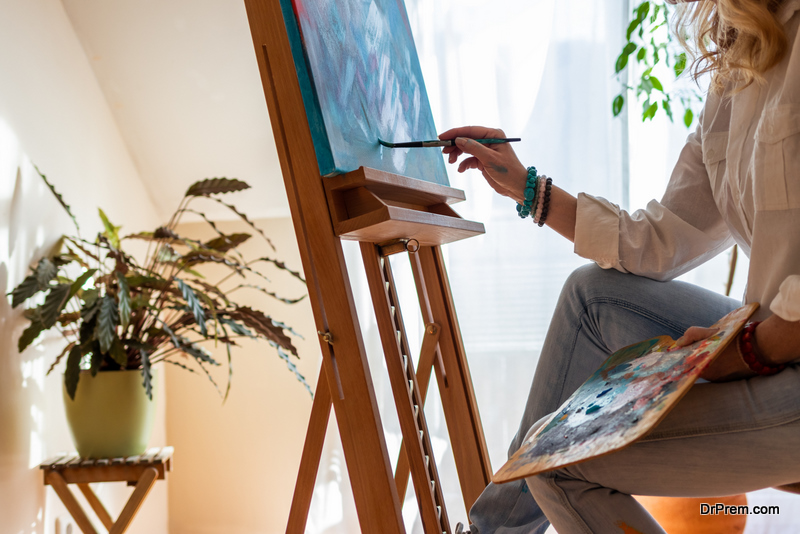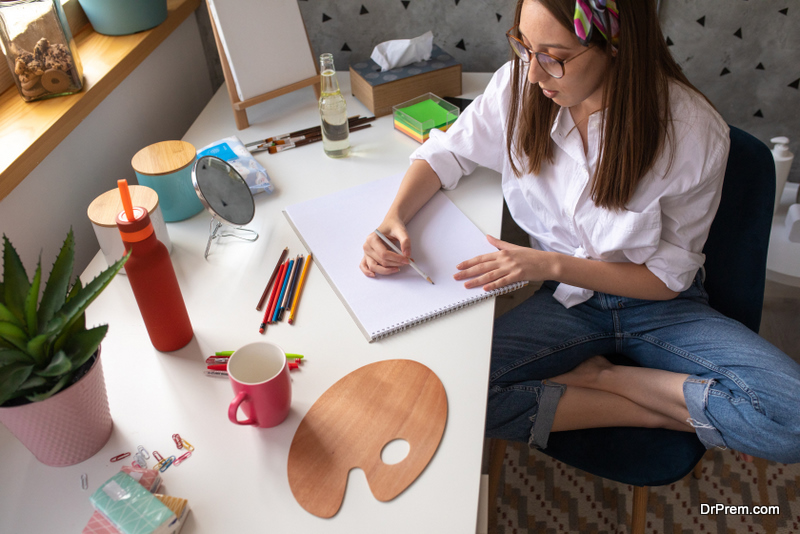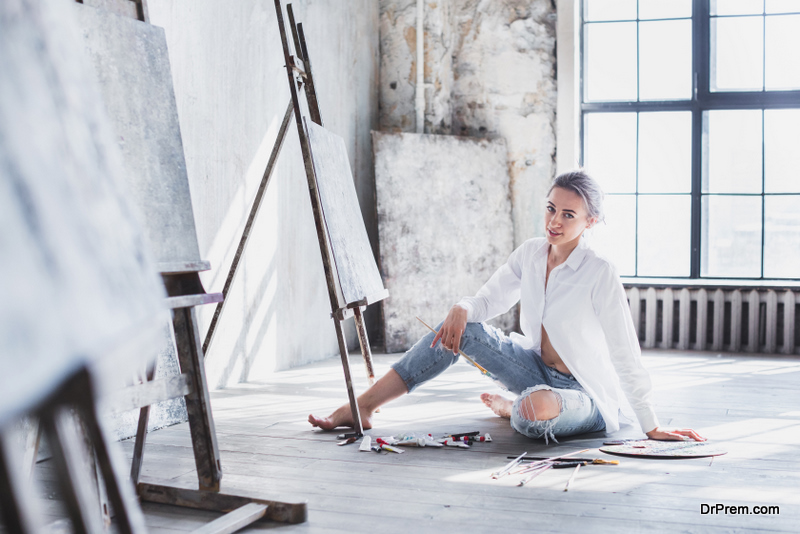It’s an artist’s dream to have their own studio—a place where they can be productive and creative without any distractions. Luckily, creating such a creative space can be done on a budget. You should need to use your home. Setting up a home art studio is obviously way cheaper than renting a working space. It is also very much accessible compared to rental studio spaces.
In addition to that, having a room dedicated to your arts or creative work can help you explore your natural creativity more. To inspire your creative genius, you need a studio that is not just equipped with all the materials you need. You also want it to be comfortable, personal, and distraction-free. Here are several tips to help you create the ultimate home art studio.
1. Find the best spot
 Before you can do anything else, you need to find the ideal space in your house for your studio. Find a spot that is not typically used or is far from any external distractions. You can transform that unused spare bedroom upstairs or dusty attic room in your personal art studio. Make the basement your last resort. Since this room typically doesn’t have great access to natural light and typically houses plumbing and heating systems, you must only consider using it if you have no other rooms available.
Before you can do anything else, you need to find the ideal space in your house for your studio. Find a spot that is not typically used or is far from any external distractions. You can transform that unused spare bedroom upstairs or dusty attic room in your personal art studio. Make the basement your last resort. Since this room typically doesn’t have great access to natural light and typically houses plumbing and heating systems, you must only consider using it if you have no other rooms available.
If you have no space room inside, another option you got is renovating your garage or shed and turn it into a new creative workshop. This allows you to have better access to natural light and own a space that’s separated from your living space.
2. Keep everything organized
Who doesn’t love the idea of a chaotic art space, right? In fact, most artists prefer a space that’s kind of messy. But in reality, a person can be more productive and focused when working in a clean and organized environment. You need to have an organizational system for everything.
If you’re a painter, you should have separate storage solutions for your brushes, paints, masking tapes or craft adhesives, and completed artworks. You can repurpose old boxes, baskets, glass jars, or tubs. On the other hand, if you’re a digital artist, you’ll need proper surfaces and shelves to keep your devices or camera equipment. Check your home if you have old stuff that you can refurbish or repaint to fit your studio setup.
3. Decorate for inspiration
 It’s a no-brainer to decorate your home art studio based on your personal style and artistic personality. You can fill it with your favorite artworks or paintings for inspiration. You can create mood boards to display your current artistic and creative desires. Set up some audio devices where you can play some music to inspire and help you focus on your work or be more productive and creative.
It’s a no-brainer to decorate your home art studio based on your personal style and artistic personality. You can fill it with your favorite artworks or paintings for inspiration. You can create mood boards to display your current artistic and creative desires. Set up some audio devices where you can play some music to inspire and help you focus on your work or be more productive and creative.
You can also paint the walls and furniture with colors and shades that you love. Ideally, if you want a peaceful and calming space to get you into a meditative state, opt for muted colors. If you want your studio to be a bit hippy and more jazz up, you can go with bold shades.
4. Set up for comfort and function
Keep in mind that you will spend many hours in your art studio, so it must be comfortable. Take into account the things that help you calm down or relax. Does it see plenty of succulents in cute pots? Sitting for a good cup of hot tea? A warm blanket you can snuggle when you’re taking a break?
If you got windows in the room, use thin coverings and open them up during the day to bring in as much natural light as you can. You can also set up your art table near the window for easy access to fresh air and view. Alternatively, you can use other types of lighting like spotlight halogens and fluorescent bulbs, depending on your needs. If you’re setting up for a craft or painting studio, it’s best to get the lights as close to white.
Furthermore, make your space a haven for your wellness by investing in good quality, comfortable chair or stool. Opt for one that is ergonomically-correct and adjustable. If you have more space in the room, you can add a small sofa or a chaise lounge — you won’t regret it!
No matter what your art medium is, your studio must be very personal. It should be filled with things that fuel your imagination or inspire you, and most of all, it should display your unique artistic personality. Be sure to follow our tips in this guide and make the process of creating your home art studio fun and successful!
Article Submitted By Community Writer




